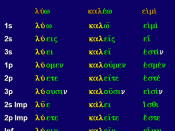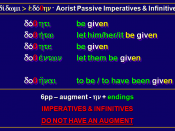Mood is the category that distinguishes between the Indicative (that denotes factuality of an action/state/event) and Non-indicative i.e. the category that expresses the attitude of the speaker towards a state/event/action. The members of this category are:
a) Imperative
b) Subjunctive
c) Conditionals
The modal verbs are also classified under mood. However, their system is so semantically intricate that it is customary to describe the modals as a separate system of mood.
The Imperative
The imperative is considered to be the most primitive non-flective form: the speaker uses this form to impose his authority on the interlocutor attempting to achieve the fulfillment of the action by the interlocutor. It does not really imply that the interlocutor will succumb to the authority of the speaker and really carry the action out in the future. It is for that reason that the imperative belongs to the non-factual domain. Imperative is usually used in the exclamatory sentences, although it may turn up in other types of sentences too.
There are two types of imperative in English:
1. simple
2. complex
The simple imperative is used in the second persons singular or plural and can take three forms: affirmative, negative, and emphatic affirmative. It has no interrogative form. The affirmative has the same form as the base form of the verb although the accent and intonation differ. Some grammarians even think that the imperative represents an instance of bare infinitive use, because "will you" can be used after it. The negative is formed by means of an unstressed "do" and the negative particle "not" (or some other negative form). The negative imperative always has an unpleasant connotation, or it can mean an urgent appeal or request, and not an order. The emphatic imperative is also formed by using "do" support.
Be quick!
Never mention it...



English Grammar
Great Piece. I enjoyed reading it and of course learnt new grammar usage.
Thanks
1 out of 1 people found this comment useful.